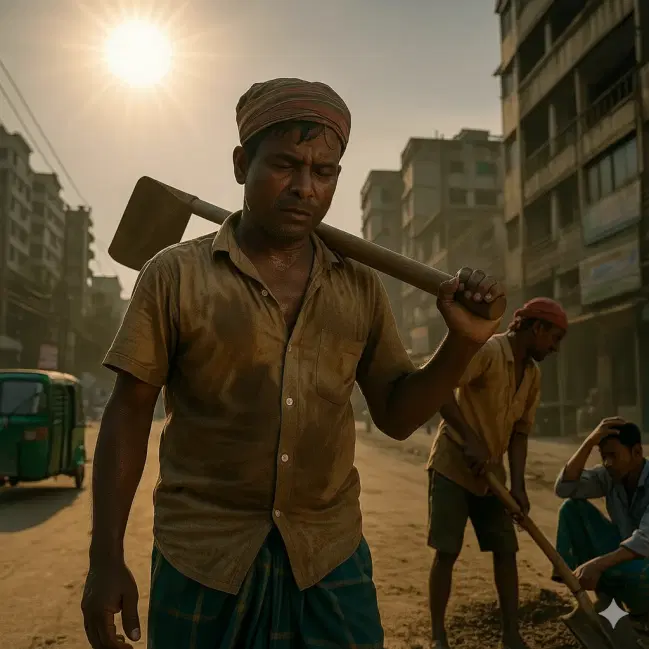Author
Share This News

Dhaka, Bangladesh — Extreme heat is no longer just a public health issue in Bangladesh; it is now a major economic threat. A new World Bank report (September 16, 2025) reveals that Bangladesh lost up to US$1.78 billion in 2024—about 0.3–0.4% of its GDP—due to heat-related illness, lost work hours, and reduced labor productivity.
Source: World bank, Reuter
The World Bank estimates that 250 million workdays were lost in 2024 as workers struggled with heat stress, exhaustion, and related health complications. Labor-intensive sectors such as ready-made garments, agriculture, and construction are hit hardest because workers often operate in poorly ventilated factories, open fields, or crowded urban job sites.
Ready-made garments (RMG): Bangladesh’s largest export sector, with over 4 million workers, faces slower production rates and rising medical costs.
Agriculture: Farmers experience shorter working hours, directly affecting food supply chains.
Construction & day labor: Outdoor workers face the highest risk, with productivity dropping sharply during peak summer months.
The report warns that Dhaka’s heat index is rising 65% faster than the national average. Since 1980, maximum recorded temperatures in Bangladesh increased by about 1.1°C, but the “feels-like” temperature (factoring in humidity) has jumped by 4.5°C—a dangerous escalation.
Source: World Bank
This means workers are exposed to longer and more dangerous heatwave conditions, especially in the capital where infrastructure and housing often lack adequate cooling.
If no adaptation measures are taken, the World Bank projects that heat stress could cut up to 5% of annual working hours by 2050 in South Asia. For Bangladesh, a country heavily dependent on manual labor, this would result in billions of dollars in economic losses every year and slow GDP growth.
Beyond productivity losses:
Healthcare systems will face rising cases of heatstroke, dehydration, and mental health issues.
Energy demand for cooling is expected to surge, straining Bangladesh’s power grid.
Urban poor communities are disproportionately exposed due to lack of affordable cooling facilities.
Experts are calling for targeted adaptation strategies, including:
Greening urban spaces to reduce the heat island effect in cities.
Upgrading ventilation systems in garment factories.
Heat-health early warning systems to prepare vulnerable communities.
Policy-driven cooling solutions supported by international climate finance.
The World Bank emphasizes that Bangladesh cannot afford to ignore the productivity cost of climate change, and that investment in climate adaptation is not optional but essential.
Bangladesh is one of the most climate-vulnerable countries in the world. Rising sea levels, cyclones, and floods already dominate the climate narrative. But extreme heat is now emerging as a silent economic killer, directly reducing national output and threatening livelihoods.
Unless urgent adaptation measures are rolled out, the cost of heat will continue to rise—undermining not only Bangladesh’s economy but also its global competitiveness in labor-intensive industries.